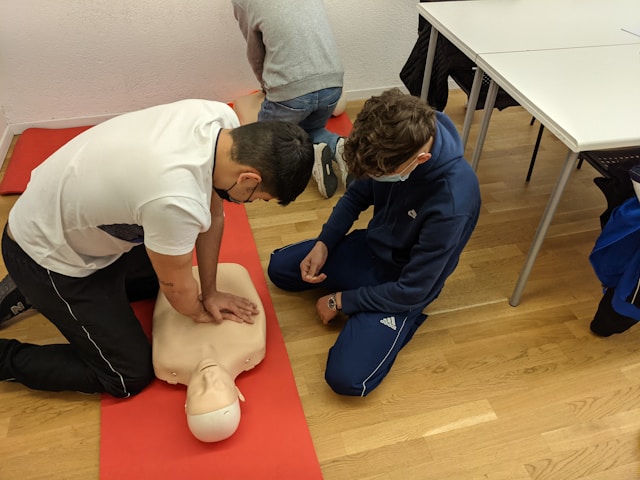
Picture: Unsplash
The safety of the children in your care is of the utmost importance. Accidents can occur, particularly in situations involving choking hazards. Learning first aid tips to assist a child in danger of choking is a crucial skill. Here are essential guidelines to help you handle this potentially life-threatening situation.
1. Recognizing Signs of Choking
The first and most important step in handling a choking incident is to identify the indicators of a potentially fatal condition as soon as possible. The inability to breathe, cough, or speak, along with a reddening or bleeding of the face, indicates an immediate need for medical attention. Additionally, recognizable actions like clenching the throat or making high-pitched noises when breathing in are unmistakable signs of choking. It is imperative to stay composed in such situations to ensure clear thinking and decisive action. Being alert is essential because it increases the chances of successfully removing the obstruction and minimizing any problems if distress signals are detected quickly.
2. Encouraging Coughing and Effective Use of Back Blows
An accurate and timely response is critical in cases of choking, especially involving minors. To start the intervention, encourage the child to cough vigorously in an attempt to loosen the obstruction. If coughing doesn’t work, move smoothly to back strikes, using controlled pressure with the heel of your hand between the child’s shoulder blades. The objective is to exert enough force to dislodge the object obstructing the airway. Precise use of back strikes is essential for both quickly attending to the emergency and shielding the infant from possible injury. This simultaneous emphasis on accuracy and quickness improves the effectiveness of the reaction and emphasizes how important it is to protect the youngster from choking hazards.
3. Administering Abdominal Thrusts (Heimlich Maneuver)
When back blows are not successful, abdominal thrusts, or the Heimlich Maneuver, are the next line of defense. Place your arms around the child’s waist from behind, then quickly push upward to apply pressure and push the obstruction out of the way. The goal of this approach is to produce a rapid rise in intra-abdominal pressure in order to help loosen the object causing the choking. Abdominal thrusts must be executed quickly and precisely while keeping the child’s welfare in mind. Knowing how to do this technique correctly can help you act quickly to treat a choking emergency and protect the youngster.
4. Learning Child CPR
Acquiring knowledge of essential first aid techniques is crucial for responding effectively to emergencies involving children. CPR, especially the pediatric version, gives people the ability to assess the situation, identify choking indications, and carry out life-saving procedures. Knowing how to open a child’s airway is crucial, from placing hands correctly to using abdominal thrusts. With the aid of the internet individuals can now easily get a CPR certification online. Online courses like these can also include video demonstrations and simulations that depict proper techniques for managing choking situations. Utilizing visual aids improves the understanding and retention of essential skills. Through comprehensive training, individuals gain confidence, ensuring a calm and effective response when faced with the critical task of assisting a child in danger of choking. In these critical instances, swift and effective intervention can be the decisive factor in determining life or death.
5. Seeking Emergency Medical Assistance
Even if the youngster is able to cough up the obstruction, it is still necessary to seek emergency medical attention. This is a fundamental precaution, given the possibility of lingering problems or unanticipated difficulties. Stressing the need for a complete medical assessment, quick medical intervention accomplishes two goals: it ensures the child’s continued health. It finds any underlying issues that might have come to light during the choking episode. It is essential to provide healthcare experts with all pertinent information so they can fully comprehend the emergency. The collaborative approach between medical professionals and caregivers highlights the importance of professional assessment even after an apparent resolution, further reinforcing the commitment to the child’s safety.
Conclusion
Preparedness in managing a choking emergency reflects a steadfast commitment to child safety. Acquiring knowledge of these first-aid tips empowers you to respond swiftly and effectively, potentially serving as a crucial factor in saving a child’s life. By understanding the steps involved in recognizing, responding to, and seeking professional assistance for choking incidents, you contribute to a safer environment for children.


